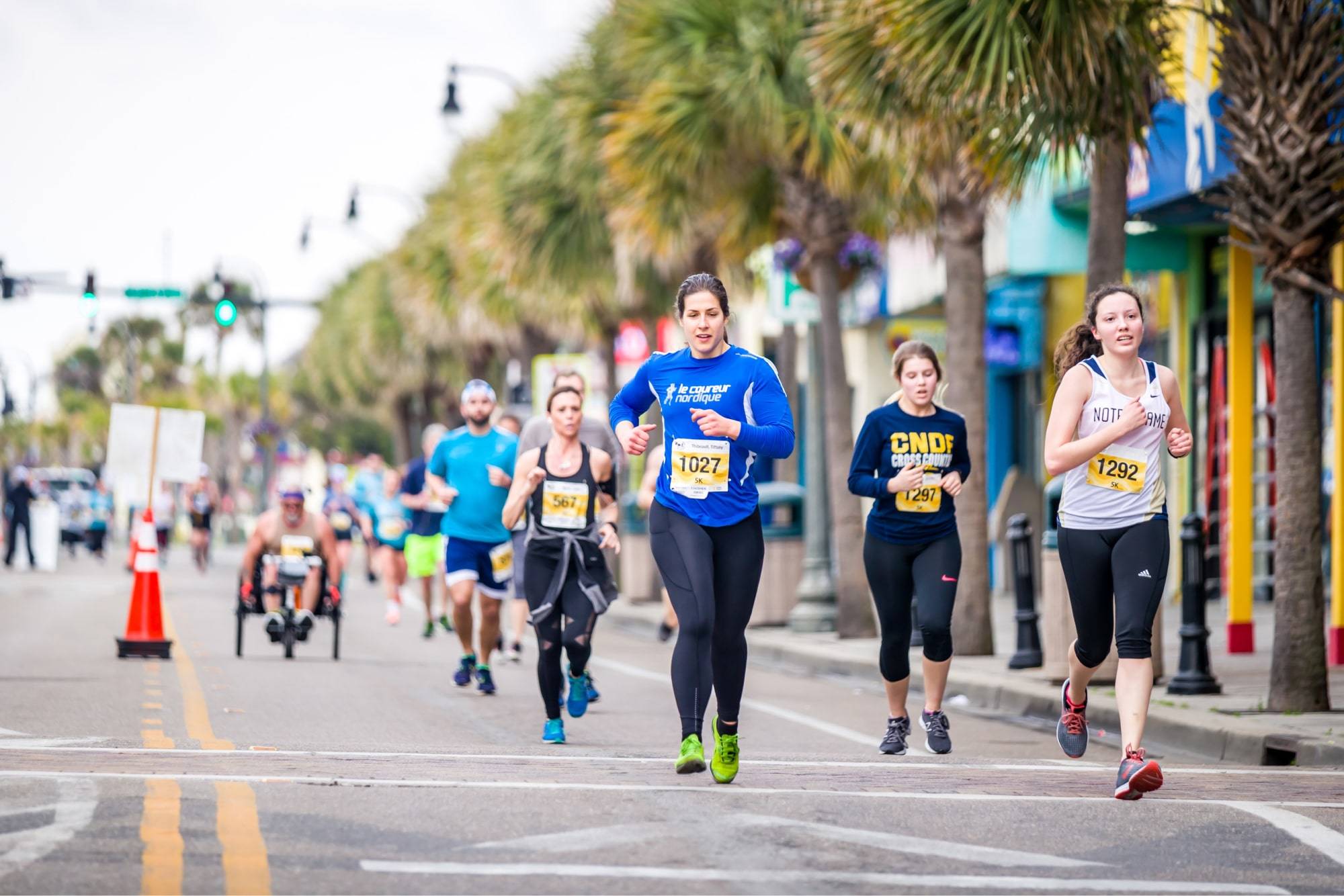A 10K is one of the most popular race distances. It is approximately 6.2 miles, long enough for beginners to test their strength and a benchmark for serious runners to run their best marathon or half marathon.
A 10K is also a good stepping stone for beginner runners to reach the next level.
“You should run your first marathon for the right reasons because you’ll never be the same person again. You must want to do it, not do it because your boss did it or your spouse did it.” – Bill Wenmark, running coach.
For beginners, a run with approximately the same speed over the entire distance is suitable.
And running with a gradual increase in speed of about 3% every kilometer has been the formula for all world records set at this distance.
It is not so important which tactic you choose, but you need to understand that running too fast at the start will definitely backfire during the second half of the race.
So, if you are already running 5Ks and hope to someday compete in the marathon, the next natural step is preparing for a 10K. The main rule of preparation is to run relaxed, not pay attention to speed, and focus on a pace at which you can talk calmly.
Save your strength, and finish your workout with the feeling that you could run a little more and a little faster – this will help you stay motivated and end every run feeling pleased.
How Long Should it Take to Run 10km?
- According to Running Level, a good 10k time is 49:43. This is the average 10k time across all ages and genders.
- The fastest 10k time is 26:24.
- A good 10k time for a man is 46:43. This is the average 10k time across men of all ages.
- The best 10k time run by a man is 26:24.
- A good 10k time for a woman is 54:13. This is the average 10k time across women of all ages.
- The fastest 10k time run by a woman is 29:43.
10k Training Plan
The easiest way to prepare for a race is to join a running club where a coach and teammates will help (you will immediately find those who run at your pace). When training is fun, the load is almost invisible. If you choose the right approach to training and stick to your intended goal, you can overcome this distance in about 12 weeks.
The optimal time to prepare for a 10K race is 12 weeks; the minimum is 6 weeks. The full 12 weeks should be spent strengthening joints and ligaments. Each week there are 2-3 days of rest and 4-5 days of training, including interval training, aerobic long, and tempo, which will help you develop speed and endurance.
If you want to prepare for the 10K race, the following plan for beginners will help you!
- In a 10K training plan for a beginner, we recommend choosing a starting distance. Its length should be such that it can be run at a slow pace and without interruptions. At the same time, overcoming this mileage should not cause any discomfort.
The first workout will help assess the condition of the body. After you finish the chosen distance, you need to do a cool-down, then run another 1/2 of the initial distance. The second workout should be similar. “As a novice, don’t worry about how fast you run; just cover the distance–or approximately the distance suggested each day. Ideally, you should be able to run at a pace that allows you to converse comfortably with any training partners,” says Hal Higdon, author of Novice 10K Training Program.
- Increase the length of the original distance. The third and subsequent workouts must be carried out in the same mode as the first two, but it is necessary to increase the initial distance. For example, if your initial distance was 2 km, your new distance could be 1.5 times that (or 3 km). You should run slowly. This will help improve breathing. Preparation should not exhaust your body, but at the same time, it should exceed the current capabilities of the body, causing it to be slightly stressed. If you have too much energy after your workout, your pace is too slow and needs to be stepped up. Or, as an option, you can increase the length of the original distance.
The break between the two runs should also be reduced. As soon as you manage to run both distances without stops, you can add another 1/2 of the initial length to the workout.
- After the new distance is mastered without a break, you can once again add to the existing mileage. Thus, the new distance could be brought up to 4 km. After this distance is also mastered, it will be possible to add 1 km every few weeks. At the same time, it is important to monitor the quality of the execution of the training.
- Improving acquired skills. The length of the distance must be increased until the desired distance of 10 km is reached. Then you can experiment with the timing and structure of the workout: speed up or slow down or try to cover the distance faster.
Training Example: Average Pace for 10k
According to Runner’s World, in the first week, you will train for 5 days and rest for 2. On rest days, you do not need to do any physical exercise. You can do stretching, yoga, or swimming without overexerting yourself.
- Monday: 4 km at an easy pace.
- Tuesday: 6 km at an easy pace.
- Wednesday: 5 km + interval work – 2 km warm-up run at an easy pace, then interval run (1 minute at a fast pace + a few minutes at a slow pace until breathing is fully restored), perform the exercise 3 times; after that – 3 km at an easy pace.
- Thursday: Rest day.
- Friday: 4 km at an easy pace + 3 accelerations. Run 4 km, and then do 3 accelerations of 100 m each (run the required distance very quickly, slowly slow down, walk a little and restore your breathing, and repeat the exercise, do 3 times in total).
- Saturday: Rest day.
- Sunday: 6 km at an easy pace (a pace at which you can talk calmly).
On the Day of the Race
For those who are confident and ready to go for a certain time and not just finish, we have some tips.
- First, you need to imagine your capabilities (for example, run a controlled 5 km and use that time to calculate the approximate final result).
- Before starting, study the route, such as elevation changes and distance markers, so there are no surprises in the form of slides, sand, or sharp descents.
- The best tactic in a 10k run is to keep pace the entire distance. For example, if the final result of 50 minutes is chosen, each kilometer must be run in 5 minutes with a margin of error of 5-7 seconds.
- It is advisable not to overwork the first kilometer. A common mistake is going out too fast because you feel good due to the euphoria and adrenaline of the race atmosphere, and then you end up suffering during the second half of the race. Keep your head cool. Start the first kilometer slower, run at a steady pace during the middle of the race, and speed up for the last kilometer before the finish line.
- Get a number and prepare all equipment the day before the race: sneakers, shorts, and a T-shirt. It is better to start in the same sneakers that you trained in. Do not race in brand new shoes that haven’t been broken in.
- On race day, don’t have a heavy breakfast. Avoid heavy foods: meat, milk, and fast food. The best breakfast is oatmeal, banana, crackers, and tea.
- Arrive at the start at least an hour in advance. Take care of storage space. Change your clothes and start warming up half an hour before the start of the competition.
We wish you a comfortable distance. You will definitely succeed, just believe in yourself and run!






